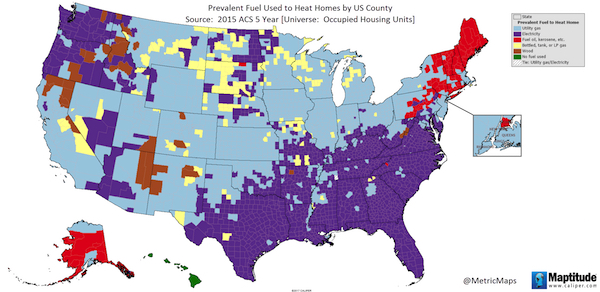
Not living from the future…
But there are times when we intentionally aim from the other direction and live from the future. I expect most of you are familiar with that as well. When you are moving or remodeling, you get to a point where you push hard to accelerate the switch; you get impatient for the future you have imagined for so long. When your kid is going off to college, you keep a lid on the sentimentalizing, and instead help yourself and your child to look forward to the change. Athletes watch videos and replay mental images of how they want to throw or kick or run, envisioning their great effort. When you adopt a perspective that looks back from the future, it can bring the future around more quickly and help you adapt to it. After all, you’ve already gotten part way there, in your head.
I feel like we need to collectively do that to meet and exceed our 2030 and 2050 climate goals. We know that our future involves electric vehicles, efficient electric heat, a more vegetarian diet, and so on. So why fight so hard against the changes? Why not get started now? That way we can help the younger generation to adapt and move more quickly towards our goals. As an example, I do not understand why we continue to make it so easy to manufacture and sell new gas-powered vehicles. We know we need to stop. There are already so many available, including a substantial used car market. Why continue to dig ourselves a hole? (1)
On the housing front, we are finally seeing some good progress locally. Two months ago Menlo Park established an almost-all-electric building code for new construction in 2020 (gas fireplaces and stoves are allowed exceptions). And just a few days ago Mountain View took a big step towards approving theirs as well (there is one more reading by City Council). It similarly requires (mostly) all-electric new construction beginning in 2020.
While new buildings are not an enormous part of our emissions -- they constitute only about 5% of Palo Alto’s planned emissions reductions prior to 2030 -- they represent a no-brainer from a “live from the future” perspective.

New construction is 5% of Palo Alto’s needed emission reductions by 2030 (source)
On November 4, Palo Alto’s City Council will be reviewing a proposal from staff for a revised 2020 building code that encourages electrification but nevertheless allows new gas buildings for two more years. All new construction (except ADUs) will need to be configured for electric heat, drying, and cooking. Electric panels will need to be adequately sized, with outlets and ducts in the right places, and even a sufficiently large space around the water heater to accommodate a heat pump. But staff is proposing a two-year grace period during which gas is still an option. It’s not clear to me why that is. The staff report indicates that residential consumers have “limited awareness” of alternatives, but that seems eminently fixable. Are we doing people a favor by letting them install gas heaters that community volunteer Tom Kabat refers to as “stranded assets”? Decarbonization advocate Panama Bartholomy likes to say that “It’s time for our buildings to match our ambitions.” I agree. So why the two-year delay? (2)
It’s funny, this blog post talks about the benefits of adopting a “live from the future” perspective to speed up changes like this. But much of this isn’t even particularly new, it’s just new to us. It would be just as helpful to adopt a “live from Japan” perspective, or Europe, or even New Zealand, where they are much farther along with efficient heating technology. Heck, even the southern US heats primarily with electricity, though it’s traditionally old-style (inefficient) electric.

Prevalent fuel used to heat homes. Gas is in light blue, electric in purple, wood in brown, oil or kerosene in red, bottled or tank gas in yellow, and no fuel at all for Hawaii in green. Source: MetricMaps.
People may point to the recent power shut-offs as a reason to keep using gas heat. But aren’t we just perpetuating the problem that way? Climate change is here; there is no two-year delay. Let’s adapt, work together to get off of gas, celebrate the cleaner energy and air while finding ways to reduce fire impacts, and keep pushing forward. We are very adaptable when we choose to be. Let’s choose!
If you need any more motivation, the die-hard futurists among us have their sights set on our living on other planets. Prefer that? Or taking steps today to save our own?

Notes and References
1. Speaking of moving away from gas-powered cars, I was happy to see this editorial by Senator Schumer in the NY Times recently. He outlines a plan to swiftly move the nation to all-electric vehicles, with the support of auto manufacturers and labor unions, with a goal of being a world leader in the technology. We need more of this kind of thinking.
2. A bigger issue is retrofitting existing homes and buildings. Palo Alto will be offering a number of incentives to encourage adoption of electric heat. Retrofits constitute a larger share of the City’s projected emissions reductions -- almost 40% -- so the rebates will be meaningful amounts. Hopefully this encourages more tradespeople to come up to speed on heat pumps and offer them in our area.
Current Climate Data (September 2019)
The global land and ocean surface temperature departure from average for September 2019 tied with 2015 as the highest for the month of September in the 140-year NOAA global temperature dataset record, which dates back to 1880.
Global impacts, US impacts, CO2 metric, Climate dashboard (updated annually)
Comment Guidelines
I hope that your contributions will be an important part of this blog. To keep the discussion productive, please adhere to these guidelines, or your comment may be moderated:
- Avoid disrespectful, disparaging, snide, angry, or ad hominem comments.
- Stay fact-based, and provide references (esp links) as helpful.
- Stay on topic.
- In general, maintain this as a welcoming space for all readers.



